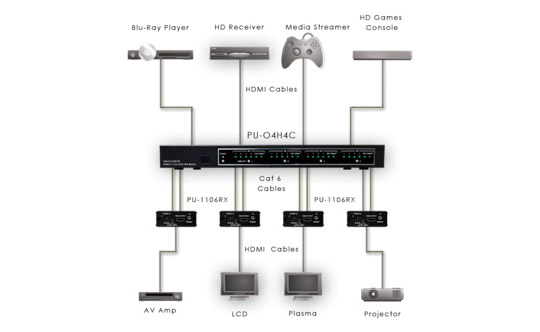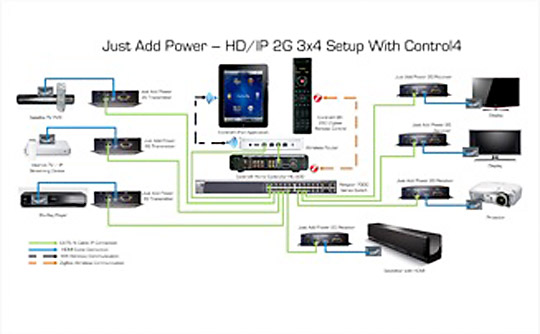With the rapid expansion of High Definition (HD) devices such as Blu Ray players and Sky HD, there has been a corresponding need to be able to distribute these HD images from room to room.
When deciding what type of HD distribution system you want to use several important considerations have to be taken into account including:-
HDCP - High-bandwidth Digital Content Protection (HDCP) is a digital copy protection applied to all cables used to transmit HD images from device to device (e.g Blu-Ray to TV). All methods of transmitting HD must be certified as HDCP compliant to enable it to work with HD devices
CEC - Consumer Electronics Control (CEC) is a feature of HDMI that allows a user to control up to 10 HDMI devices with a standard remote control. In practical terms this may mean you can use your remote to turn on your TV and Blu-Ray player at the same time, and adjust the system volume with one button.
EDID - Extended display identification data (EDID) is a data structure provided by digital displays e.g. TV's and projectors to describe its capabilities to the HD distribution system. The ability to alter EDID settings allow picture settings to be optimised for best quality.
Pre-terminated HD cables can be used to link a source device directly to a TV but are typically limited to 20m in length. Its possible to combine HD cables with HD splitters so that one source can be distributed to multiple TV's.
Cat 5e or Cat 6 data cables can be converted to send HD signals with the use of devices called Baluns. The HD source is fed into a Balun which is then linked to a remote Balun via a data cable and reconverted to a standard HD signal.

Commonly 2 data cables are required per Balun to maximise picture quality but distances are typically limited to 50m. Devices commonly require an external power source but passive units are available.
HD matrixes consist of units that take multiple HD inputs which are then distributed to multiple TV's over Cat 5e/6 cables. Commonly available matrixes have 4 inputs and 8 outputs but a wide range of units are available.
Each input source can be distributed to individual TV's as required to give a large degree of flexibility. Control is achieved with the use of a remote control at any TV, RS232 commands or from the matrix itself.
As with Baluns, distance limitations of approximately 50m exist with Matrix systems but some devices do offer flexible EDID settings.
HD sources are encoded into a TCP/IP format and connected to a standard network switch. Decoders are then used at the TV to convert the IP stream back into a standard HD format.

This system gives great flexibility and scaleablity with systems from 1x1, to 4,000 x 65,000 (and everything in between). Control of the system including EDID settings are achieved through software installed on a networked computer or third party control devices such as AMX units.
In addition to HD images, the system can be used to used to transfer other data formats such as USB and CEC.
If you require any advice or design help with you HD distribution needs, please do not contact us, we have experience in all types of systems ranging from simple baluns up to multiple input/output IP systems. To read our spotlight on HD distribution Click Here.
